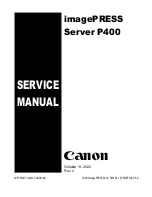
Storage planning
For clustering, a storage unit (LUN) must be designated for the cluster and con
fi
gured as a mirrorset. This
LUN is used for the Quorum disk. The Quorum disk is the shared storage used by the cluster nodes to
coordinate the internal cluster state.
One or more RAID arrays are dedicated to each cluster node for data storage. Each cluster node
assumes ownership of at least one physical disk resource. That owner node serves all shares within that
physical disks resource, until a failover condition occurs. When a failover occurs, the physical disk
resource and all associated shares transition over to the remaining nodes and remain there until the other
node is returned to service. Some types of shares are not cluster aware and are not available during a
failover condition. See “"
Protocol planning
" on page 123” for additional information.
To prepare a basic disk for use in a cluster, a cluster group for each basic disk should be created to
allow each resource to fail over separately. After the group is created, a physical disk resource is created
in each of the groups. Cluster groups can contain more than one physical disk depending on the
site-speci
fi
c requirements. This physical disk resource is required for the basic disk to successfully work in
a cluster environment, protecting it from simultaneous access from each node.
NOTE:
The LUN underlying the basic disk should be presented to only one node of the cluster using selective
storage presentation SAN switch zoning, or having only one node online at all times until the physical
resource for the basic disk is established.
In preparing for the cluster installation:
•
All software components listed in the
HP ProLiant Storage Server SAN Connection and
Management
white paper (located on your server documentation CD) must be installed and the
fi
ber cables attached to the HBAs before the cluster installation is started.
•
All shared disks, including the Quorum disk, must be accessible from both nodes. When testing
connectivity between server and LUN, only one server should be given access to the LUN at a
time, or the non-testing server should be powered off.
•
All shared disks must be con
fi
gured as basic (not dynamic).
•
All partitions on the disks must be formatted as NTFS.
Network planning
Clusters require more sophisticated networking arrangements than a stand alone storage server. For
example, because a cluster must be deployed into a domain environment, workgroups are not supported.
A Windows NT domain or Active Directory domain must be in place to contain the cluster names,
virtual server names, and user and group information. A cluster cannot be deployed into a non domain
environment.
All cluster deployments have at least seven network addresses and network names:
•
The cluster name (Unique NETBIOS Name) and IP address
•
Node A’s name and IP address
•
Node B’s name and IP address
•
At least one virtual server name and IP address for Node A
•
At least one virtual server name and IP address for Node B
•
Cluster Interconnect static IP addresses for Node A and Node B
In multi-node deployments, additional network addresses are required. For each additional node, three
static IP addresses are required.
Virtual names and addresses are the only identi
fi
cation used by clients on the network. Because the
names and addresses are virtual, their ownership can transition from one node to the other during a
failover, preserving access to the shares on the virtual disks.
122
Cluster administration
Summary of Contents for ProLiant DL380 G5 DPSS
Page 24: ...24 The HP storage server solution ...
Page 96: ...96 Print services ...
Page 152: ...152 Network adapter teaming ...
















































